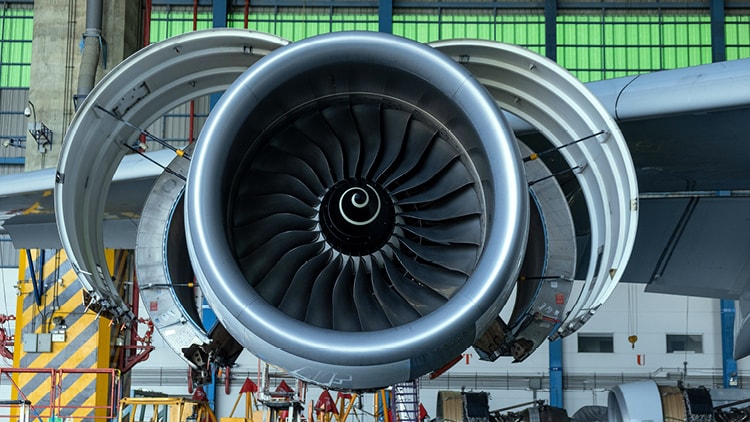- Airline operating profits will exceed $49 billion in 2024, according to IATA, with further upside potential from strong demand and robust pricing power
Passenger numbers rebound strongly to within 5% of pre-COVID levels
Supply chain and production quality issues will persist throughout 2024
2023 was a stand-out year for aircraft lessors
Up to $110 billion of aircraft delivery financing will be needed in 2024
2024 will be year for real path towards 5-10% SAF by 2030
Ireland has the opportunity to take a leading role in the aviation sector’s journey to net zero by 2050

Airline profitability turned a corner in 2023 and moved solidly back into the black. The International Air Transport Association (IATA) expects further improvement in 2024, with a $49 billion operating profit and a net profit of $23 billion. There is further upside potential from strong demand and robust pricing power.
Passenger traffic will reach or surpass 2019 levels in all regions in 2024 but recovering four years of lost growth will take a good deal longer. Air freight markets will remain relatively weak, with a recovery in volume growth offset by soft rates. With the return of more widebody belly capacity, the dedicated freight operators will continue to face challenges.
Airlines will continue to face operational challenges in 2024, combined with slower yield growth and higher costs, especially labour and debt servicing, will create economic headwinds. Quality and supply chain issues will continue to frustrate manufacturers’ plans to increase production rates. However, the return on invested capital for airlines is still expected to approach 5% and there is scope for the airlines to do better than forecast.
Delivery financing of between $105 and $110 billion will be required in 2024, with lessors providing more than 50%. This is according to PwC’s “2024 Aviation Industry Review & Outlook’‘ authored by Dick Forsberg, Senior Aviation Finance Consultant, PwC Ireland, published today.
The report highlights the following key 2024 predictions for the airline industry:
Airline profitability will exceed the IATA forecast, boosted by strong demand and robust pricing power
Western manufacturers (Original Equipment Manufacturers - OEMs) will deliver more than 1,500 aircraft
Aircraft values will recover further, with widebodies outpacing narrowbodies
More lessor consolidation is expected, but few new entrants
There will be a marked uptick in aircraft trading
737 Max 7 and 10 certification will not happen in 2024
Investor appetite for aviation assets will increase, through direct lessor platform investments or via deployment of managed funds
The burden of sustainability reporting will start to be felt by airlines, lessors and financiers
2024 will be the year when it becomes possible to see a real path to 5-10% Sustainable Aviation Fuel (SAF) by 2030
Generative AI will become more widely used as the industry begins to explore its potential
Passenger numbers rebound strongly to within 5% of pre-COVID levels
2023 marked a clear turning point for the airline industry as passenger demand continued to rebound strongly from COVID-19, increasing by 23% to 4.3 billion, which is within 5% of the pre-COVID level. Over the same period, Revenue Passenger Kilometres (RPKs) increased by 38% as long-haul travel accelerated. However, many airlines have been unable to fully respond to demand due to a mix of quality, supply chain and infrastructure issues as well as labour shortages. According to IATA, passenger numbers will reach 4.7 billion in 2024.
Premium travel demand came back strongly in 2023, providing the full-service airlines with a welcome boost to their revenues and profitability. One key metric that also delivered a material tailwind to the industry in 2023 was a 20% reduction in the average price of jet fuel.
Dick Forsberg, Senior Aviation Finance Consultant, PwC Ireland and author of the report, said: “This is a remarkable performance that speaks volumes for the resilience and adaptability of the industry as well as the undisputed global demand and need for air travel.
“This outcome is materially ahead of mid-year expectations largely due to the airlines’ ability to pass on cost increases to passengers which, on top of the demand-driven pricing opportunity, resulted in fares that in many markets were 20-30% higher in 2023 than pre-COVID.”
“Key issues for aviation will be to do with production quality and supply chain as well as turning the dial on the journey towards decarbonising the industry. Key opportunities include technology and particularly GenAI to achieve cost savings, efficiencies and customer loyalty.”
A stand-out year for lessors
2023 has been a stand-out year for aircraft lessors, with COVID firmly established in the rear-view mirror, strong demand for aircraft and substantial improvements in lease rates, all of which led to strong profitability. Lessors contributed an estimated $40 billion of delivery financing in 2023, with a further $6.5 billion in used aircraft sale and leaseback transactions.
Supply chain and production quality issues will persist throughout 2024
Supply chain and production quality issues continued to apply the brakes on deliveries in 2023 and will persist throughout 2024. The demand side of the equation is looking extremely robust for the western manufacturers well into the future, with an average of 8.5 years’ production on backlog (a total of 14,500 aircraft).
However, the ability to build aircraft that meet fundamental safety and quality requirements, should be an absolute given, but too often continues to fall short. Supply chains remain broken and production will, consequently, continue to fall short of where it needs to be throughout 2024 and beyond.
Industry attracting substantial capital
The availability of both debt and equity is still below pre-COVID levels due to a combination of macro-economic and fiscal uncertainty, broad concerns around the aviation sector in particular and perceived better value to be found in other sectors. However, the industry is still attracting substantial amounts of capital for delivery financing, estimated to be around US$83 billion in 2023.
Generative AI (GenAI) huge opportunity
GenAI has the power to transform every aspect of the aviation industry and 2024 will see a rapid expansion of AI integration into airline, OEM, Maintenance, Repair, Overhaul (MRO) and leasing businesses. The opportunities are immense from realising unprecedented growth, greater personalisation and operational efficiencies. From analysis of vast amounts of data, enhancing customer service, improving lessor profitability, GenAI has the power to reshape the entire aviation industry. However, it must be understood and used with care.
2024 will see a real path towards 5-10% SAF by 2030
2024 will be the year when it becomes possible to see a real path to 5-10% Sustainable Aviation Fuel (SAF) by 2030. According to PwC’s recent report ‘Supercharging sustainable aviation fuels for net zero’, SAFs can lower emissions significantly because they are derived from sustainable resources and are widely recognised as one of the main levers to reduce the sector’s emissions.
However, some 325 million tons of SAF annually will be needed to reach net zero by 2050. That compares with production of only 240,000 tonnes in 2022, according to IATA. The capacity to produce SAF is inadequate to meet the expected growth in demand or fulfil future regulatory targets for carbon emissions. It will take an estimated €1 trillion in capital expenditure simply to build new SAF refineries - a huge task for an industry. The report puts forward five specific and immediate actions that the aviation industry can take to help accelerate SAF adoption and overcome the roadblocks. The effort needs to start now to ensure the opportunity to scale and establish SAF as a viable low-carbon alternative isn’t lost.
Ireland has the opportunity to take a leading role in the aviation sector’s journey to net zero by 2050
Speaking about Ireland’s aviation industry, Brian Leonard, PwC Ireland’s Aviation Finance Leader, said: “Ireland has been a leading global aviation centre of excellence for the last 50 years, attracting the world’s top players. Over 60% of the world’s leased aircraft are managed from Ireland, and 14 of the world’s top 15 lessors are located here.
“Ireland, as the leading centre for aircraft leasing globally and home to Europe's largest airline, has the opportunity to take a leading role in the aviation sector's journey to net zero by 2050. This can include tax relief for investments into projects working on the development of new Sustainable Aviation Fuel technologies. The scale of change and innovation required to arrive at commercially viable solutions to achieve net zero is arguably the industry's biggest challenge.
“With the many global uncertainties, the aviation industry has shown itself to be resilient and adaptable. 2024 will be a year where airlines continue to restructure, improve profitability and ESG metrics, which will become increasingly important in the eyes of the travellers and financiers.”
About PwC
At PwC, our purpose is to build trust in society and solve important problems. We’re a network of firms in 151 countries with over 360,000 people who are committed to delivering quality in assurance, advisory and tax services. Find out more and tell us what matters to you by visiting us at pwc.com.
PwC refers to the PwC network or one or more of its member firms or both, each of which is a separate legal entity. Please see pwc.com/structure for further details.
© 2024 PwC. All rights reserved







Menu